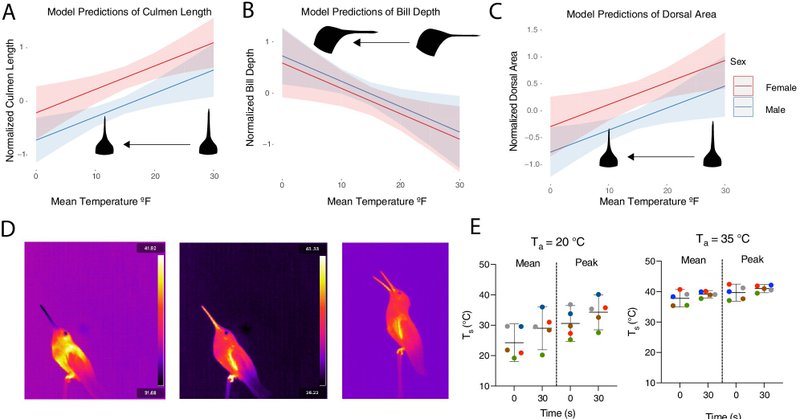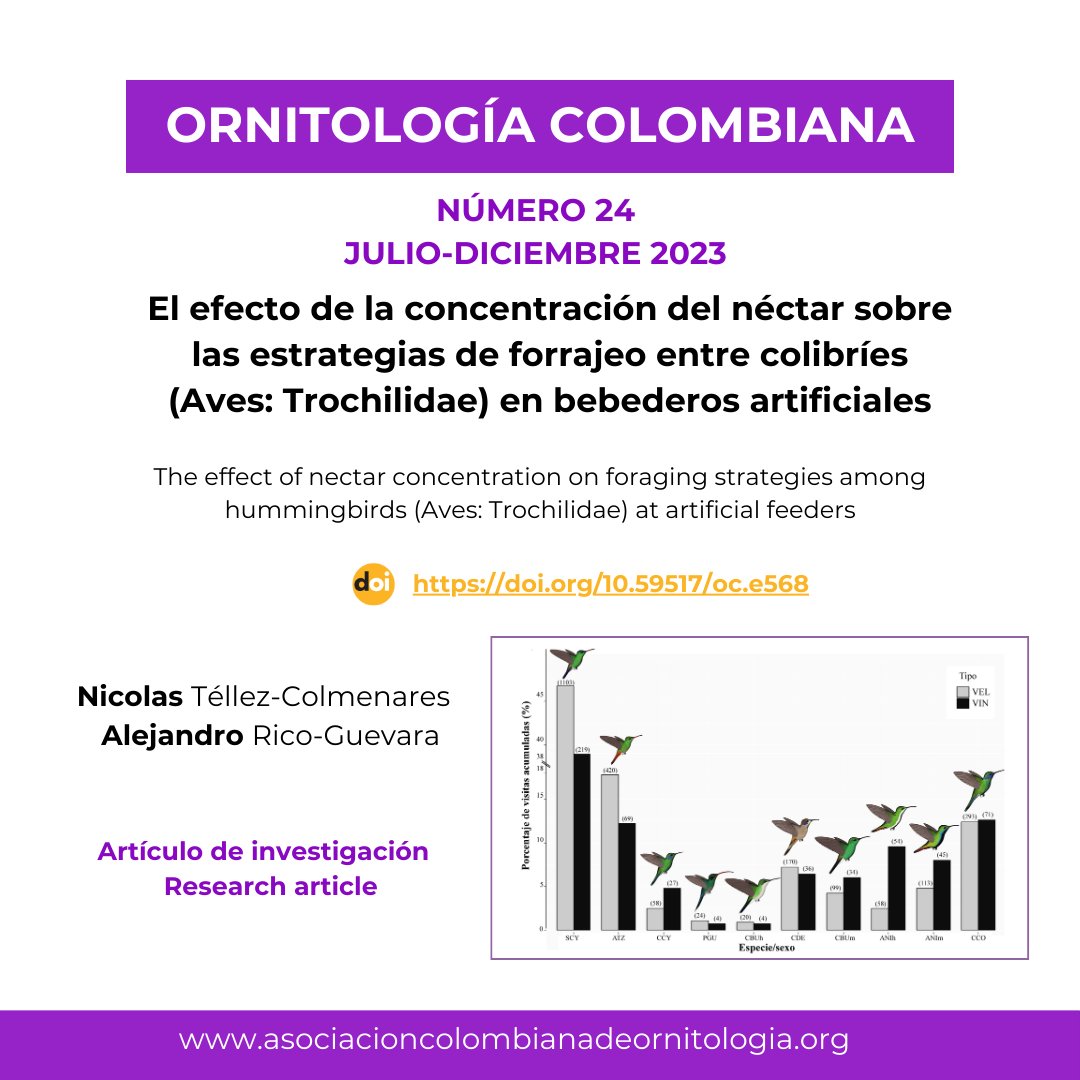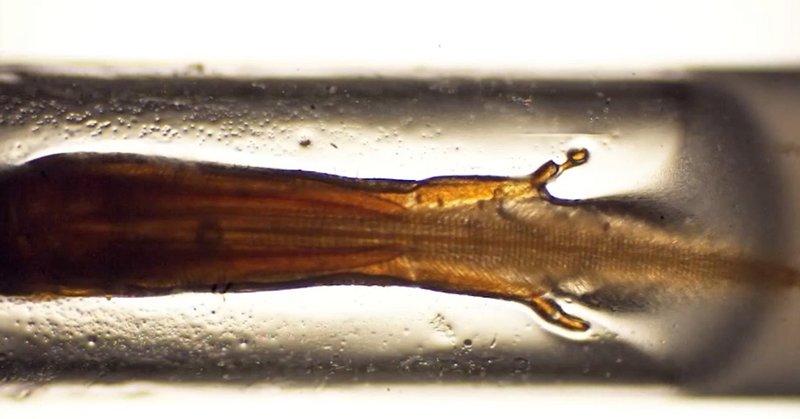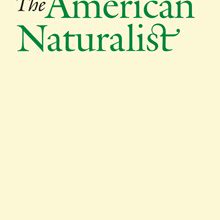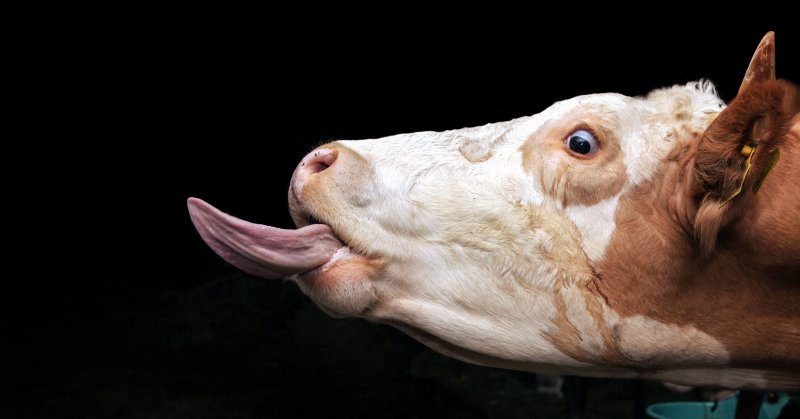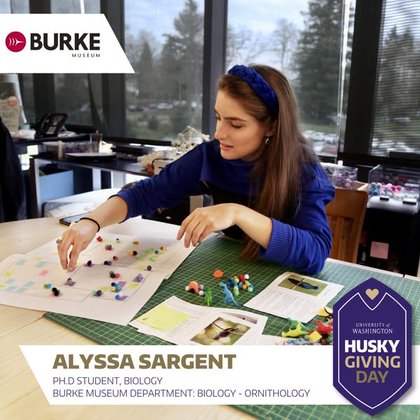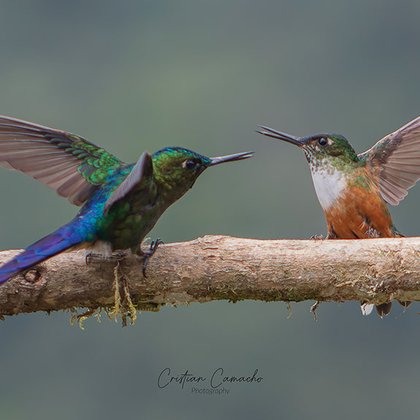
Alejandro Rico-Guevara
@ecophysicslab
Followers
681
Following
671
Media
6
Statuses
330
Walt Halperin Endowed Assistant Professor @UWBiology, Curator of Ornithology @burkemuseum, Distinguished Investigator @wrfseattle, from 🇨🇴!
Joined June 2018
I made this to celebrate the winds of CHANGE! Enjoy!!!
0
9
61
RT @NicMAlexandre: Take a look at @ScienceMagazine's article describing our work in @GlobalChangeBio showing that beak morphology of hummi….
science.org
Beaks have grown longer and larger, and ranges have expanded to follow the feeders
0
1
0
RT @NicMAlexandre: @fayegromero @zoemig @ecophysicslab @cj_battey @MVZUCB TL;DR:.Feeders are associated with population growth, and morphol….
onlinelibrary.wiley.com
Bird beaks are highly adaptable, with the potential to undergo rapid morphological shifts in response to environmental change such as climatic variation or food availability. Anna's Hummingbirds...
0
1
0
RT @biorxivpreprint: PicoCam: High-resolution 3D imaging of live animals and preserved specimens #bioRxiv.
0
2
0
RT @EcheverryGalvis: Manuscrito en inglés & español para poder seguir pensando en todo lo que aún no sabemos.
0
14
0
RT @SICB_DCB_DVM: #SICB2024 is over and we would like to say a big congrats to our 2024 Best Student Presentation Winners for DCB, David Cu….
0
7
0
Check out this science #dissemination article on our honeybee nectar-feeding research! Especially its connections to the importance of deepening our understanding of the details of the mechanisms for our broader understanding of ecological success:.
science.org
The bees’ versatile feeding strategies help them access nectar as efficiently as possible
1
2
13
Reaching deep: honeybees adapt their nectar extraction mechanisms to maintain feeding efficiency! Check out our data- and methods- rich paper on #mechanoethology and the importance of considering the actual behavior rather than accepting preconceptions!.
pnas.org
The feeding mechanisms of animals constrain the spectrum of resources that they can exploit profitably. For floral nectar eaters, both corolla dept...
0
3
7
Hummingbirds are famous for hovering but they'd take any opportunity to avoid doing so, and this reflects in their evolution! A new highlight of our research, in a nutshell: "Clinging hummingbirds have smaller beaks and bigger feet than do honest hoverers".
Most hummingbird-pollinated flowers droop upside down, so the animals must nimbly hover to access them, frantically beating their wings up to 80 times a second. Yet some sneaky hummingbirds can cheat the system—with the help of their toes.
0
15
47
RT @NewsfromScience: Most hummingbird-pollinated flowers droop upside down, so the animals must nimbly hover to access them, frantically be….
science.org
Big feet and short beaks allow the birds to mooch nectar without transporting pollen
0
5
0
RT @ICB_journal: Special Friday blog: .rounding out #Pride2023 with . Guidelines for Making #Fieldwork Accessible and Safer for #LGBTQ+ #Sc….
0
8
0
Extremely enjoyable and fruitful work with @rkcolwell, @tf_rangel, @Euastrum, @Salty_Sparrow, and Diego Sustaita! Stayed tuned for the typeset version which will be fully open access! In the meantime feel free to access this unformatted version here:
0
2
9
Hummingbirds may seem noble hovering fairies that trade pollination services for nectar, but more than 20 times, short-billed species evolved long toenails to cling to feed or pierce flowers to steal nectar, while long-billed species must hover to feed.
journals.uchicago.edu
Abstract Differences among hummingbird species in bill length and shape have rightly been viewed as adaptive in relation to the morphology of the flowers they visit for nectar. In this study we...
2
28
89
Tongues are the treasures that you rarely see because they are concealed inside the chest (mouth. confusing words with multiple meanings!), and there is so much to discover about these hidden gems!! Research from folks at our lab is featured here: .
science.org
By specializing for catching, ingesting, and swallowing all sorts of food, tongues had dramatic impact on animal evolution
1
10
26
RT @NewsfromScience: Since first evolving 350 million years ago, the tongue has taken myriad forms, unlocking new niches and boosting the d….
science.org
By specializing for catching, ingesting, and swallowing all sorts of food, tongues had dramatic impact on animal evolution
0
5
0
RT @burkemuseum: Cutting edge science doesn't have to involve the fanciest, most expensive technology. In a new paper, Burke Ornithology C….
0
5
0
Check out Alyssa Sargent's (a PhD student at our Behavioral Ecophysics Lab) work on a STEM curriculum and a "Hummingbird game"!
facebook.com
Meet Alyssa Sargent. A 3rd year PhD student in the UW Biology department. With a great deal of help from the Burke’s Education Department, Alyssa conceived and developed “Hummingbird Sugar Rush”...
0
1
9
RT @AnatRecord: New research on adaptations to frugivory in the pale spear-nosed bat, #Phyllostomus discolor, by Laura Quinche, @SESantanaM….
0
19
0
Cover of the current issue!
royalsocietypublishing.org
Our latest #hummingbird research is out in @RSocPublishing ! With @ecophysicslab @M_Araya_Salas Juan Parra and Gary Stiles. We studied how elevation and habitat structure gradients affect sexually dimorphic traits in the whole family, and we made the cover too!🧵.
0
0
6


